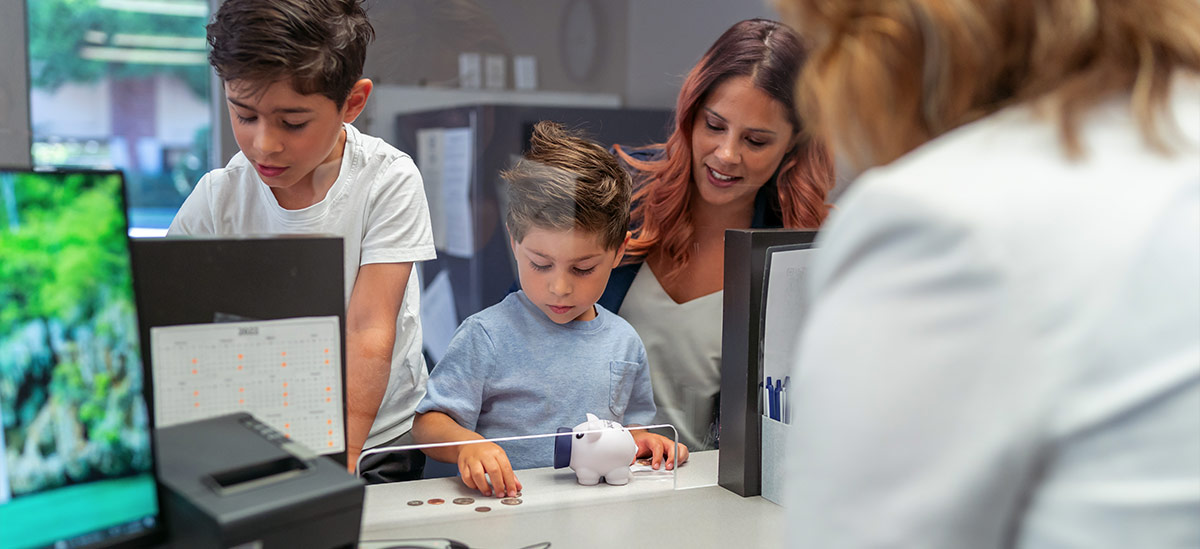
Teens seem to always have a need for money, whether it’s going out with friends, buying clothes, or for hobbies they enjoy. That's why, when it comes time for them to learn money management, a bank account may be the right option.
Bank accounts for teenagers offer the best of grown-up banking perks along with some educational benefits, too.
Are you ready to empower the next generation of savvy spenders and savers? Here's what you need to know.
Reasons For A Teen To Have A Bank Account
Teens may mean well but still find it easy to overspend. That's because it can be hard to take responsibility for money that's stashed in a piggy bank or is managed by a parent. When the money is under the teen's control, they can see it grow over time. The teen may also be more likely to meet goals and take a practical approach toward spending.
Teens who have their own accounts can learn to:
- Budget for important items
- Use mobile banking apps and tools
- Use a debit card or digital wallet
- Make deposits and withdrawals
- Use the language of personal finance
How A Teenager Can Open A Bank Account
We know the answer to "Can a teen have a bank account?" is "yes." So, how do you go about it?
Teens who are still minors in their state (usually under 19 or 18) will need a parent or guardian to help them open an account. Depending on the financial institution's requirements, a government-issued ID may be needed for either the teen, the guardian, or both. The bank will likely ask for proof of address[1], where bank documents will be sent, and a minimum deposit to get the account started. However, some accounts don't need an initial deposit, so check with your financial institution for details.
With a parent’s help, a teenager can open an account online or in person.
Should A Teen Have Both A Checking and Savings Account?
Checking and savings accounts offer very different things. While you can typically make deposits and withdrawals from both, a checking account is designed for more frequent withdrawals, paying bills, or managing multiple monthly transactions. It's often connected to a debit card, so teens can make purchases easily at retailers, gas stations, or their favorite online shop.
Savings accounts, on the other hand, are designed for short and long-term savings goals, so more than a few withdrawals a month may result in high fees. Understanding the teen's financial goals can help you guide them to the right choice. Or teach them even more savvy with money by opening both types of accounts and showing them how to move money between those accounts when needed.
Will Teens Need To Open New Accounts When They Become Adults?
Student or teen accounts require a parent or guardian co-signer when first opening. The adult may be the primary or secondary account owner. If the teen is set up as the primary account owner, however, the co-signer would have to agree to remove themselves from the account.
What To Look For In A Teen Bank Account
Many banks offer student or teen bank account options. They're a great way to learn about finances and build a relationship with a future adult customer. Not all accounts are the same, however. Ask yourself these questions when shopping around:
- Does my child need a savings account, checking account, or both?
- Consider how easy it is to open both at the same time and if they can be linked for easier maintenance.
- What fees are involved with a student account?
- While some fees can be waived with a minimum balance, verify how "free" accounts can remain that way.
- How are overdrafts handled?
- Inquire about a grace period or a certain amount of overdraft that can be managed without paying a high fee.
- What kind of debit card comes with the account?
- Some cards can be used virtually or as part of a digital wallet, as well as in physical form.
- What apps or other financial tools come with the account?
- Examine the level of detail for apps and budgeting tools to see if there is an educational component.
- What happens to the account when my student becomes an adult?
- Learn if you need to take any special action or if it automatically converts.
You may also choose a student account at a bank where you already do business. Since it’s common to handle multiple money matters at one bank, this can be convenient. Consider picking a bank that can open a student account and help them with their first car loan, student loan, or credit card.
The Best Ways To Use A Bank Account For Teens
Once the account is opened, think of how they can begin using it immediately. A savings goal may be the best place to start. Encourage your teen to create a savings plan, whether they contribute $15 a month, $150, or even more.
Ask your teenager to plan how long it will take to meet their goal and what they will do when they meet it. Will they plan another goal? Can they have more than one money goal at once?
By using these smaller money missions, students can learn a lot about how easy it can be to save for something important and still manage surprises such as uneven income or unexpected expenses.
You may also try having them plan for every dollar. For example, a give/save/spend strategy lets them set aside a certain amount of all their money for a special goal. They can designate $.30 of every dollar for spending and $.50 for saving, as well as $.20 for giving, if they choose. Whatever their values are, there’s a plan to match. They can practice putting these amounts into their respective student accounts and watch their money grow!
Next Steps For Financial Education
Looking for additional ways to help students manage money? The PNC Virtual Wallet Student offers tools for creating a better budget, spending smartly, and saving for important goals.







